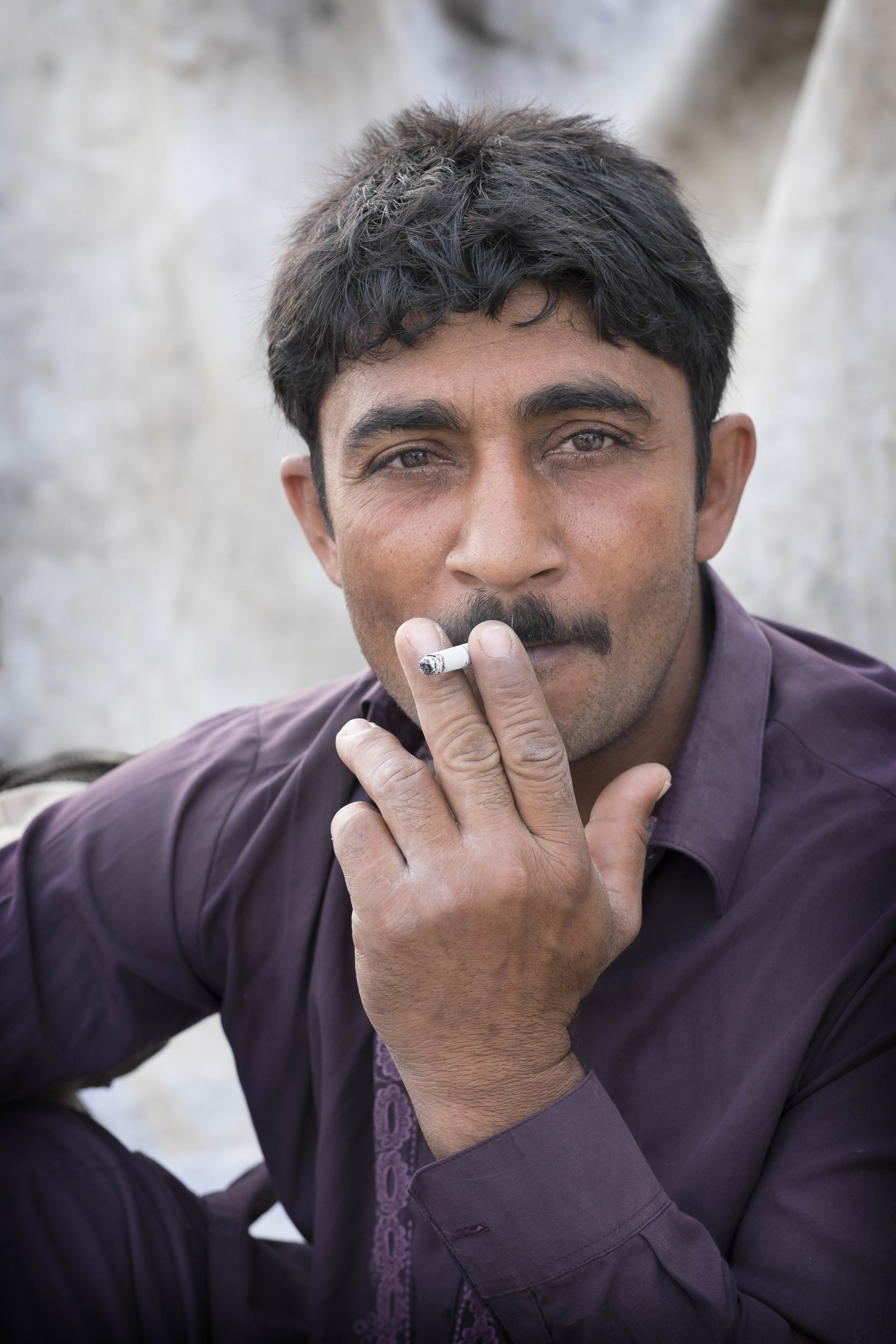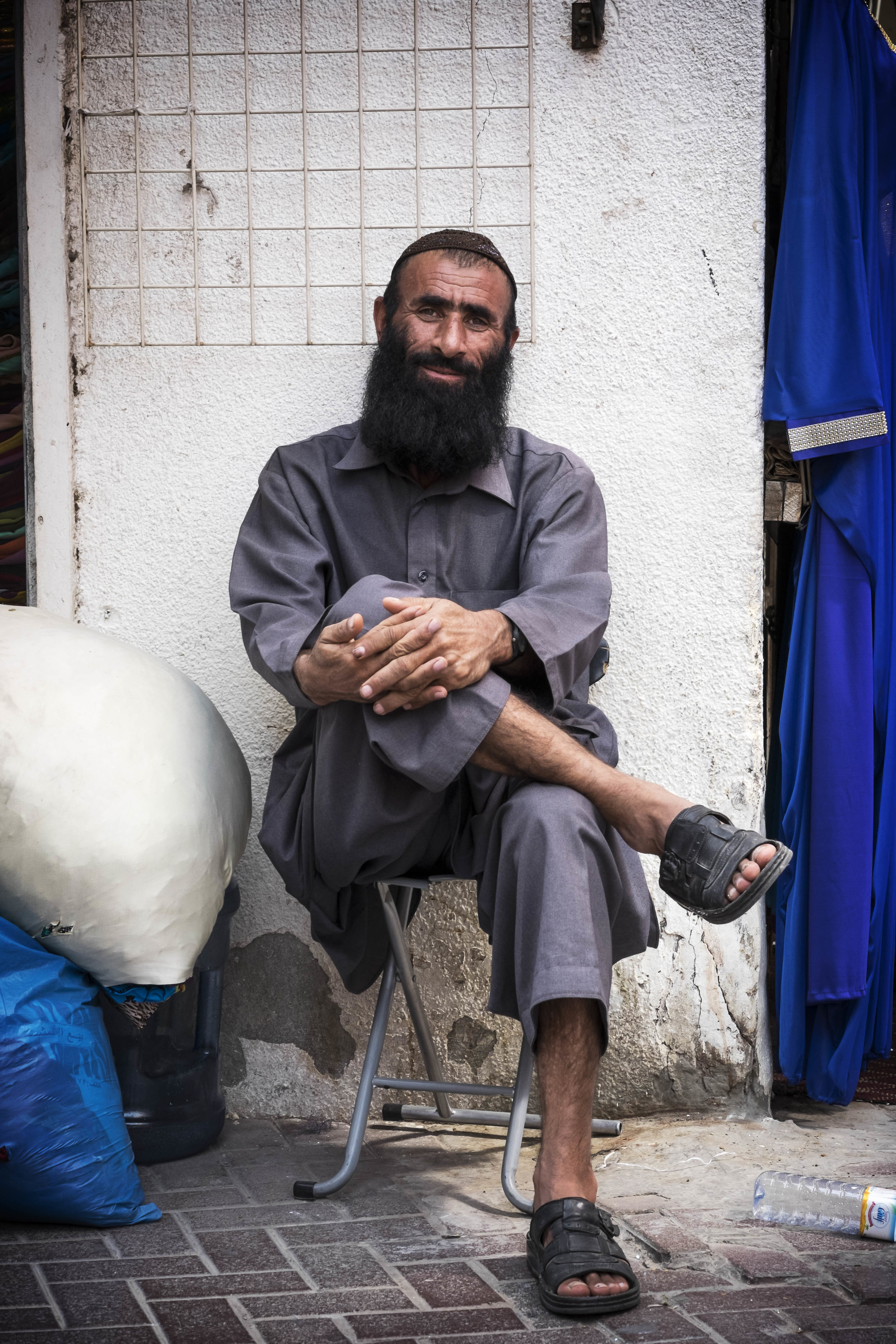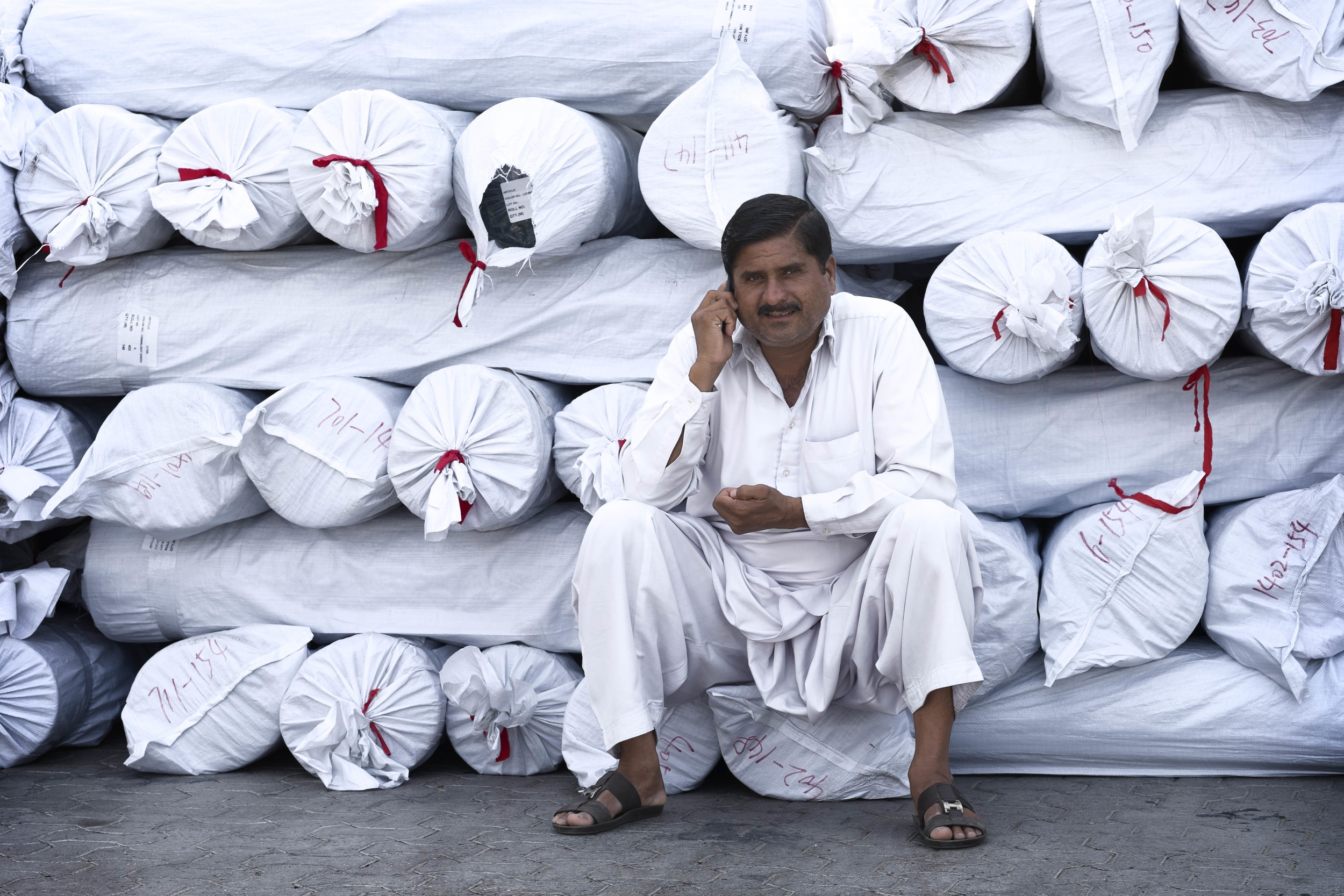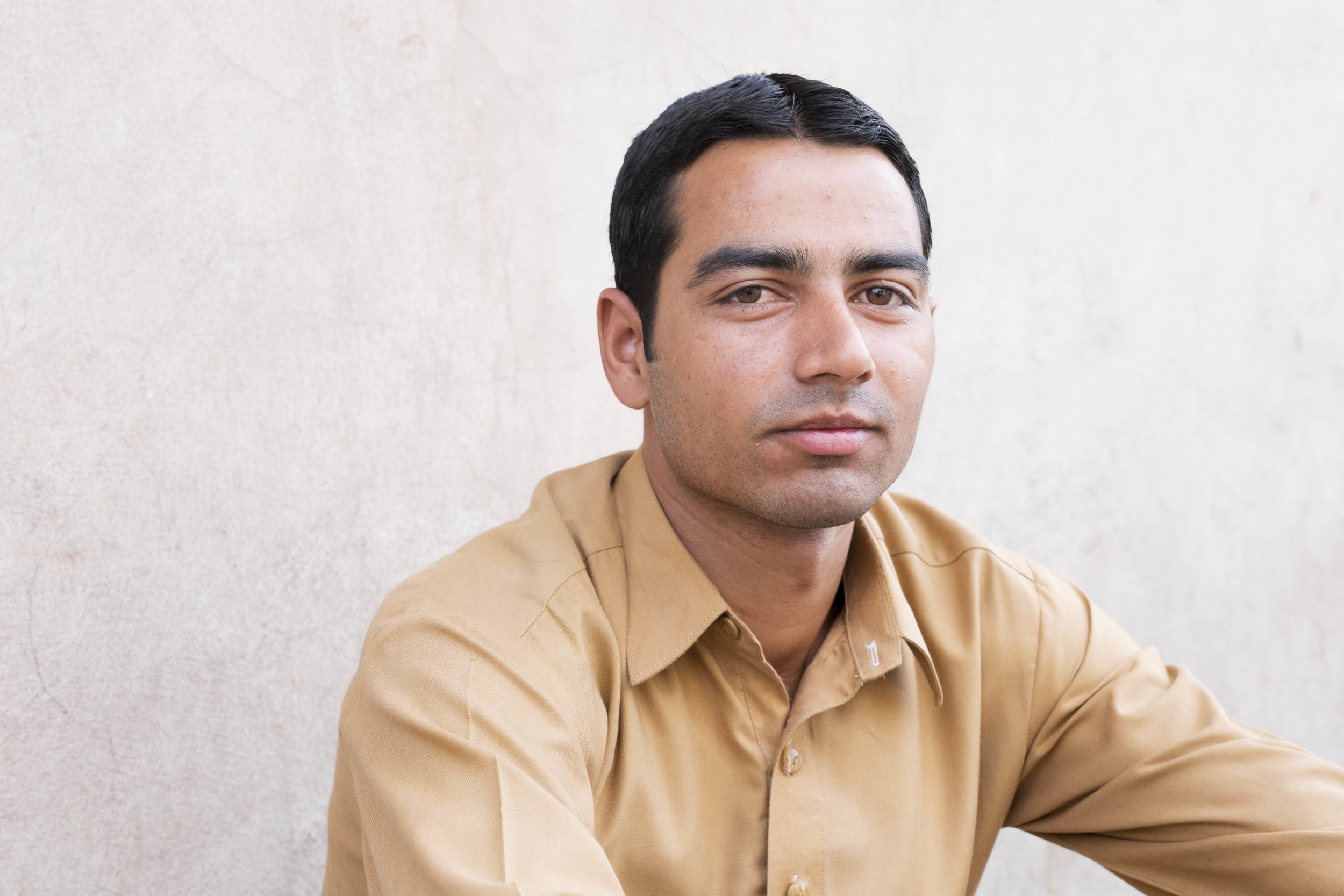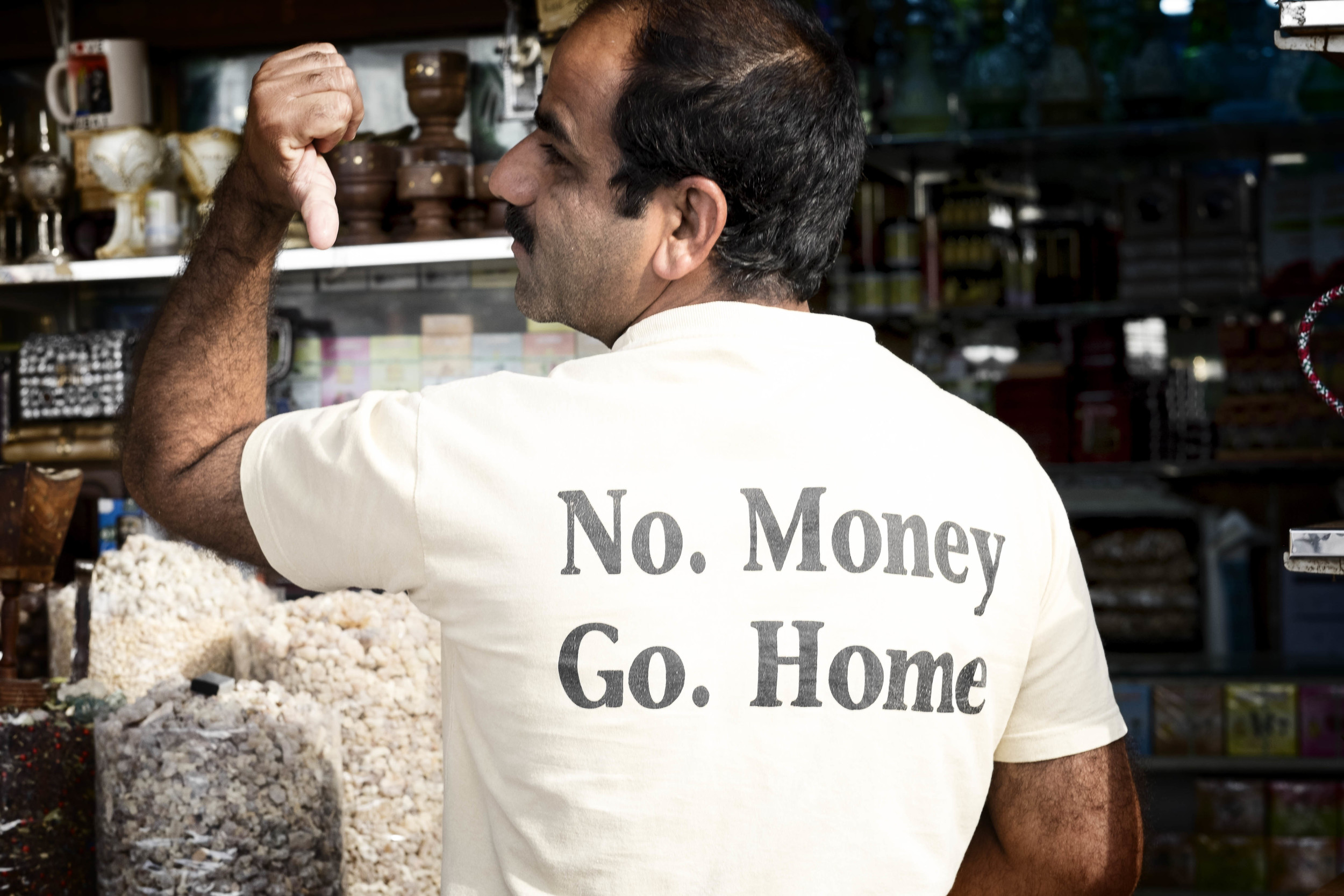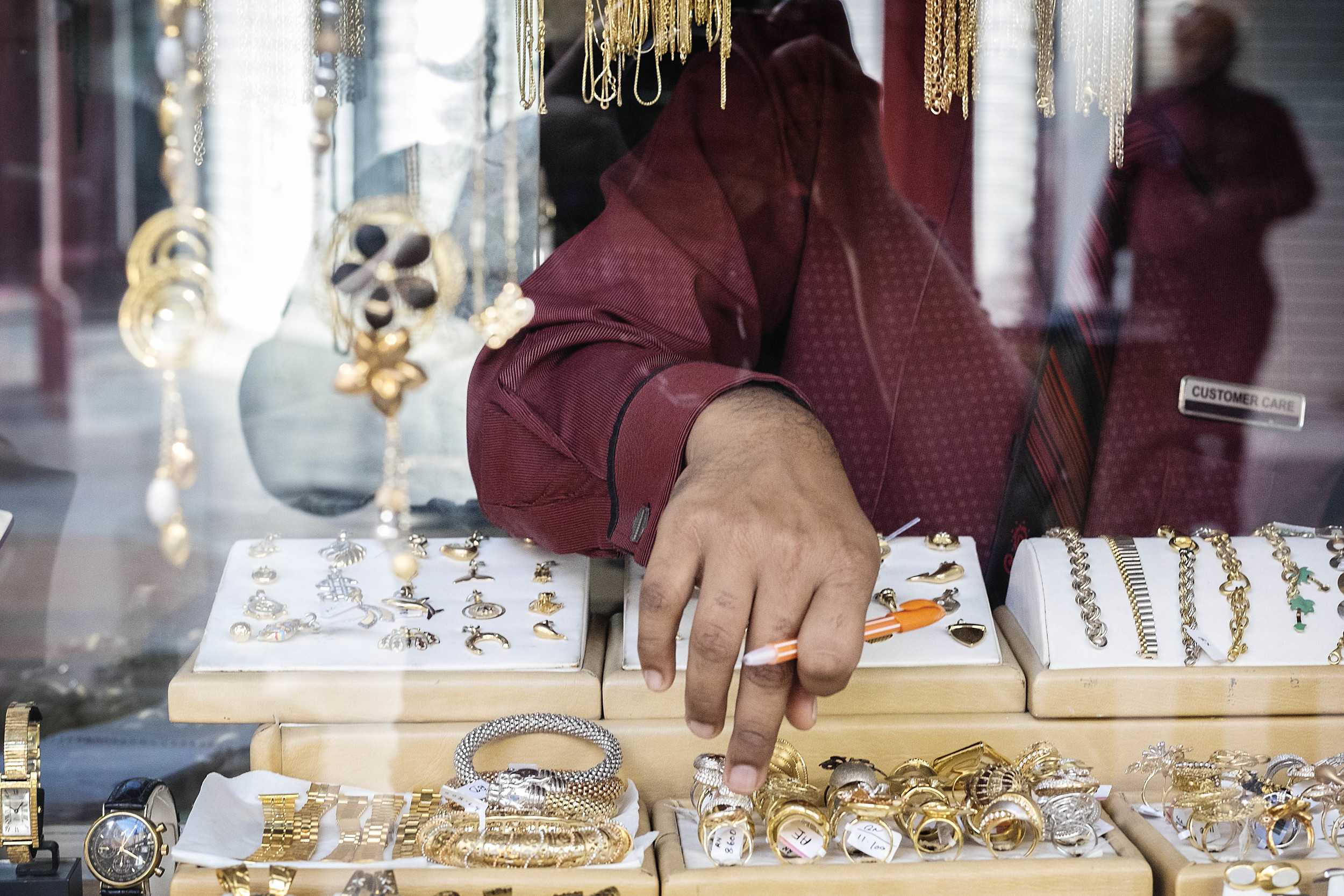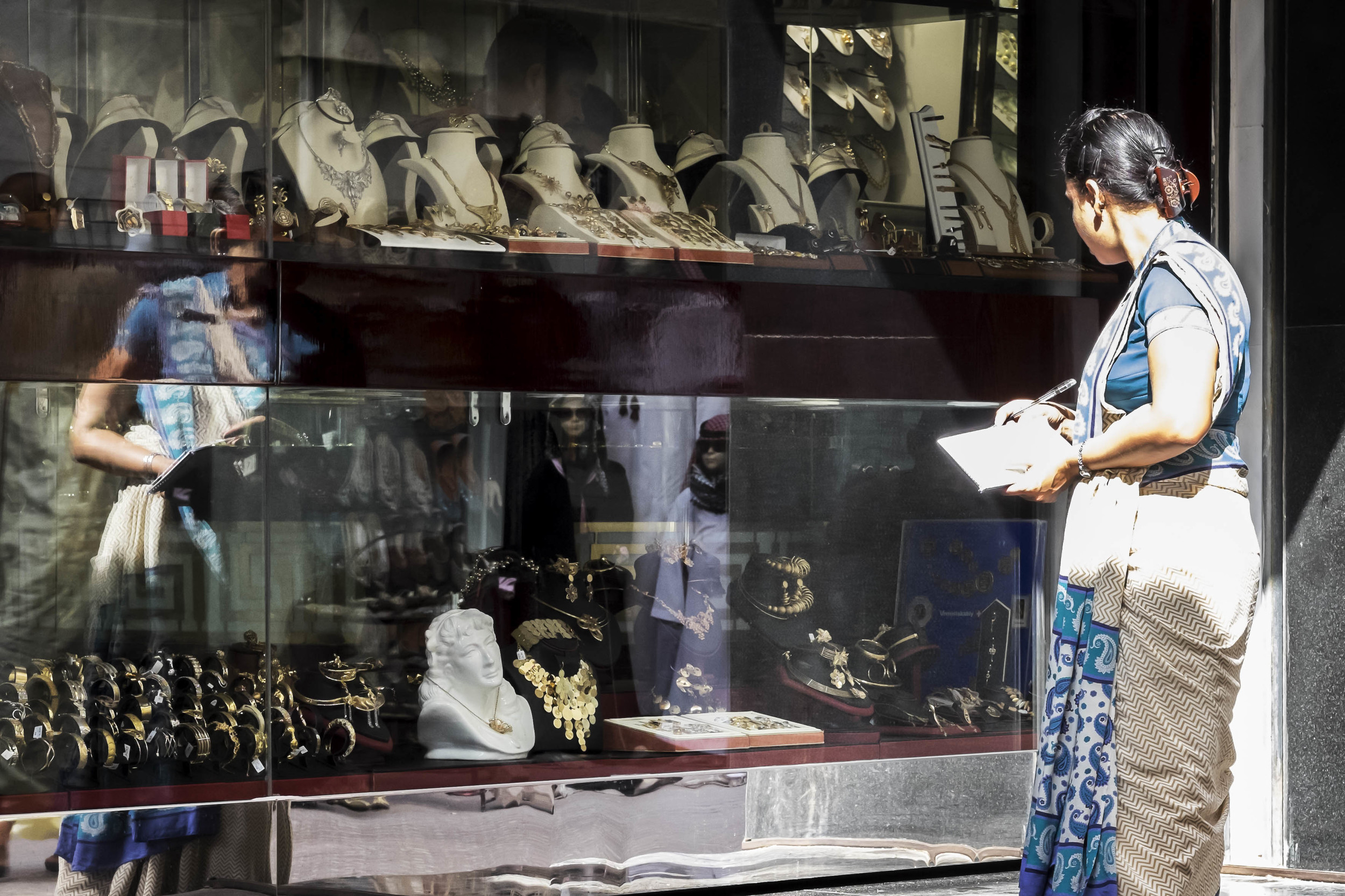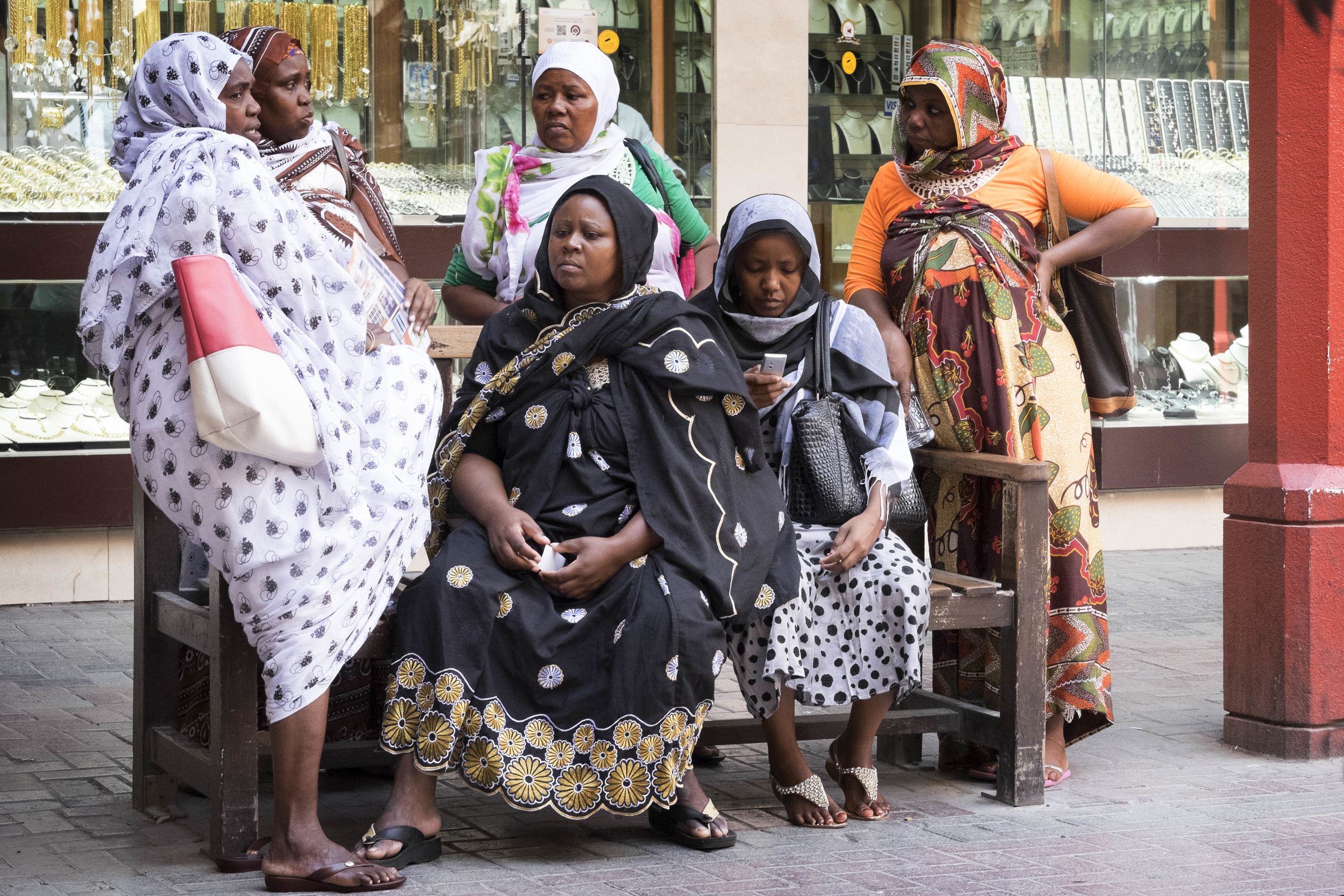Walking around - Edgeware Road, Oxford Circus, Regent Street, Notting hill, Portobello Road and Spitalfields market.
Read MoreBrick Lane
With its narrow streets crammed with curry houses, old synagogues, drapers stores, colourful markets and just a hint of the memory of Jack the Ripper, Brick Lane is one of the liveliest, if gritty, streetscapes in London
Read MoreMore Low Light - at the Deira Corniche
Another set of low light images albeit this time images were made at the Dubai Corniche.
Read MoreYou are not in Kansas anymore, Welcome to Vegas, baby.
Trip to Vegas
Read MoreNight time Street photography in Bur Dubai
Bernard, Vikas, Sally, Jonathan and I met up for a bit of night photography in one of the old markets in Bur Dubai. Surprisingly the weather was quite tolerable. Once the sun went down, it cooled down to 33 degrees (centigrade) and the wind help to cool us down even further. The market was full of barbershops, material shops, tailors, butchers, cobblers, supermarkets, mom and pop stores selling a wide variety of wares. It was surprisingly bright due the large number of florescent lighting in and around all the store fronts. We walked around for about 2 hours including a 20 min pit stop at a local juice bar. It was quite a lot of fun and we are hoping to repeat the experience. In terms of the images shot, we experimented with a variety of camera and lens and shooting modes. Jonathan was shooting with a Leica / 50 mm f2.5, Sally had a nikon and Vikas was shooting with a Mark3D. Bernard and I were shooting with the Fuji XT. As usual, he had the 55-200 lens while I was shooting with the kit lens ( I did carry my 55 m along but didn't get the chance to try it out). It was interesting to compare our approaches. He shot in very close while I shot wide so we had different perspectives of the same scene. For example, when I shot this image, he shot this one.
There was a lot of contrast created due to the bright lights and the dark backgrounds. I decided that in processing the images I would try and simulate the Kodak T400 black and White film adjusted for a bit of less grain than what one would have found on if shooting with the actual film. It's a bit more of a dramatic high contrast look and not something that I have tried before. I am still of two minds on whether I like the digital processing or not. There was a lot of storefront and reflections that had to be incorporated in the images. In some case, they added to the drama and in some cases they really were a pain to deal with. There are quite a few shooting and processing challenges that need to be mastered in night street photography.
I am definitely going to go back and shoot more street in Bur Dubai at night.
In the heat of the Night
Images made while walking around the streets of Bur Dubai (old Dubai) by night.
Read MoreCuba - a photographer's dream
“Cuba very safe. Here there is no mafia, no gangs, no guns”
Read MoreEarly Morning Photowalk at the Dubai Souk
I went down to the Dubai Souk with a photography mate - Bernard and my new acquisition, the Fujifilm XT along with the kit lens (which is damn good in it's own right) and the 56 mm. I came across both Bernard and the XT during the Gulf Photo Plus Photography Festival in Dubai in March this year. Before I go further, I would like to caveat something. I am not writing a full blown review here. There are a number of websites who have done extensive technical reviews which the reader can easily research on the web.
From a shooting perspective, one of the best "not so techy" reviews out there so far, in my opinion, is the one posted by David Nightingale recently. So stop right here if you haven't read it. Read it and then come back to my post.
(Click here to read David's review)
A compelling and accurate write up. I don't think I can add any comments of substance to the review but what I can do is - vouch for the veracity of that review. Why? because first, I have the privilege of being very much acquainted with David and two, I pretty much went through the same shooting and conversion experience as David (albeit I was not included in the top ten list who were given a free kit (lol).
You have got to respect Fujifilm's marketing strategy. Not only have they improved their camera line over a short period of time, they take on board the suggestions given to them by serious photographers all over the world and they give photographer pros and wannabes (like myself) the opportunity to test the camera out, no holds barred, no conditions attached. How much better could that get? During the Gulf PHoto Plus Week this march, I discovered that Fujifilm had set up shop and was loaning it's various camera models and lens to all GPP participants for free. Of course, I wasn't going to forego that opportunity so I borrowed an XT with the Kit lens as a lark. I had just bought the Sony Alpha 7 with the 35 mm lens and I didn't' think that the XT shooting experience could be any better than the Sony.
I was wrong.
It's far, far better.
For all the reasons that David Nightingale has laid out in his review.
And because when I shoot with it, my heart fills with joy. Really.
And because they offer a much broader range of lens. More options than Sony. Much better glass. (What was I thinking when I bought that camera? Ah yes, I got lost in the full frame, lightest camera argument)
My only request right now is if Fuji can update their firmware to allow for better HDR shooting. I want to be able to shoot 5 exposures one EV apart.
But I digress - back to the photo walk on saturday. Both Bernard and I were shooting with the XT, I was using the 56 mm and he was using the 55-200 mm. Bernard was full of fantastic photo stories and information and the XT was doing it's thang. An all around amazing morning that I hope to repeat again.
We shared our images after the fact and both of us had images which were beautifully rendered, skin tones and all.
Keep Calm and Snap On
Key learnings from David's "Shoot the Street" Workshop at GPP
Read MoreSinging the GPP blues
Well, it's over. The best week I have had photography wise this year. I was privileged to be part of the GPP team this year. 15 instructors, 48 workshops and 7 special events! I assisted David Nightingale (www.chromasia.com) in running three workshops that involved shooting urban landscapes, street photography, digital processing and a two day trip down to the Eastern Coast of UAE. It was a fantastic experience. I did things I never thought I would do - getting up an ungodly hours twice (4 am), scaling a small wall (very ungracefully), scraped my elbows, tottered over some rocks, walked incessantly (my knees hurt) and was generally sleep deprived and incoherent. I jumped over a dog (don't ask, long story), negotiated for the return of a camera confiscated by the border police, generally accosted old arab men asking for permission to photograph them and switched from the Sony Alpha to the Fuji XT (More about the last one in another post soon)
I met some fantastic people who participated in the workshops and all the events and who share a mutual passion for photography. I am sure that some of us will continue to stay in touch and will try to find ways to get together to share views, critique images and discuss gear.
I had the opportunity to meet Gregory Heisler, David Hobby, Joe McNally, David Alan Harvey, Bobbi Lane, Eric Kim, RC Conception, Joel Grimes, Steve Simon and Zack Arias amongst others. How much better could it be?
The festival closed with the photo shootout between Sara Lando and Zack Arias. I am sure it will be posted on youtube soon so I won't spoil it for the reader but what a fantastic experience. Then I am going collate my images and post them on the blog/social media.
I am so rejuvenated. I was feeling very stale and depressed the week before GPP started. Work was wearing me down and I was constantly surrounded by an atmosphere of negativity. Taking the time off to listen to these very creative and passionate master photographers, listening to their life stories, trying to absorb all the advice they were giving out and the overall atmosphere of optimism and encouragement was a balm to my soul. It came at the right time for me. I am determined to re-apply myself to my photography.
Key Takeaways for me this week:
"First learn all the rules [photographically] and then break them"
"Choose one camera, one lens, one light and one modifier for your next personal project - keep it really simple" (Zack Arias)
"Think like an artist, not as a photographer" - [Joel Grimes]
- If you define yourself as a “Traditional Photographer”, (which of course is an open ended discussion that nobody seems to agree on) then you cross the realm of the unforgivable. But as an “Artist”, all is forgiven. Why, because as an artist you get to fulfill your artistic vision, not a ”representation of reality”. As an “Artist” there are no boundaries, unless you make the decision to set boundaries to best fulfill your vision as artist. Now that is freedom. Freedom to explore without preconceived ideas and guidelines established by others.
- "A sandbag has a 1000 more uses than a light meter"
"Build a body of work in series" - {everyone}
"if you are not sure of the shot, take it anyway" {Eric Kim}
"Don't rush, sometimes you need to be deliberative - {David Nightingale}
"Create an inspiration book"
"Tell a story visually"
Smiles
When the voices of children are heard on the green And laughing is heard on the hill, My heart is at rest within my breast And everything else is still. (William Blake)
Read MoreThis is not India but it could have been.
Going back to my post regarding diasporas and the influence of migrant communities on "foreign" landscape, this is an image I took in dubai. This goes back to my fascination around migrant communities and how they influence their immediate landscape. The link to my original post is below the image.
Read MoreRole Reversal?
Standing on a street corner, I noticed these two mannequins looking like they were checking out the passerby's and I actually managed to catch a moment!
Read MoreSouthall, London
The first thing I noticed were the bilingual signs, in English and Gurumuki (a Punjabi language). Then there were the Kabab Shops, the street food stalls selling samosas and Indian sweets, the bright fabrics hanging in shop front and women dressed in colorful saris and shalwar kameezes.
Read MoreThinking about Street Photography
 Street photography has been around since the advent of cameras. Early photographers made street photographs for their personal interest, but it was with studio portraits or artistic landscapes that they paid the bills or achieved artistic recognition. To a certain degree that trend remains. I have yet to see a photographer admit to earning goo money from street photography alone. Despite this, street photography continues to be a genre that attract many photographers and many of them pursue this genre as a passion.
Street photography has been around since the advent of cameras. Early photographers made street photographs for their personal interest, but it was with studio portraits or artistic landscapes that they paid the bills or achieved artistic recognition. To a certain degree that trend remains. I have yet to see a photographer admit to earning goo money from street photography alone. Despite this, street photography continues to be a genre that attract many photographers and many of them pursue this genre as a passion.
While there are many definitions on what constitutes “true” street photography, my personal preference is the one defined by LFPH as “un-posed, un-staged photography which captures, explores or questions contemporary society and the relationships between individuals and their surroundings.”
Essentially, street photography captures people and places within the public domain.
Street photography does not need to include people although it usually does. Some photographers feel very strongly about this and insist that if the image does not contain people, it does not fall under the true definition of “street photography”. I don’t completely agree with that view. My view is that any image as long as its situated in public environments – often but not exclusively, urban settings – falls under the definition of street photography.
Another important aspect of street photography is the sense that the captured scene is unplanned, with an absence of prior arrangement. Generic scenes from pre-planned public events do not have the same feeling of chance encounter and spontaneity. Many street photographers feel that going to an organised event and taking images there does not fall under the category of “true” street photography. Again, I am not in complete agreement. There is nothing to say that if a photographer knowingly attends an organized event he or she might not still be able to capture a spontaneous and unrelated street scene. There is some element of social documentary in street photography. If not, then all the images would be without intent. Images without intent don’t tell a story and therefore don’t leave a lasting impression. After all, if you cannot be stimulated to contemplate the story being told by the image, there is a strong likelihood you won’t remember the image.
Shooting styles are also debated. There are two ways to shoot images on the street, openly or covertly. Many street photographers prefer the latter. Being open about shooting a picture of a stranger on the street is emotionally demanding. It’s takes a lot of chuzpah to go up to someone and risk hostility.
When it comes to street photography, it’s quite hard to get good images. Sometimes you have to wait a long time for something of interest to happen. (Decisive Moment)
While the debate on what constitutes as street photography continues to rage, there are some areas that street photographers can agree on.
- Traditionally, street photographs have been in black and white often with a gritty feel or texture to the images. In Black and Images, form, texture and shape play very a strong role in composition.
- Nowadays, the color medium is also acceptable. It adds another dimension to the elements that can add interest to the composition.
- Images with People (the preference being not to shoot the back of people) and
- Without People (give the viewer a sense of place)
- Gestures are important
- Unplanned to a very large degree
- Capture the whimsical life of the street
- The ability to capture a Juxtaposition of contrast (people or place)
- Should have Intent – the photos should tell a story. The intent is to give us a sense of life and contemplate what is happening or could happen next.
Subjects and settings can vary greatly but the key elements of spontaneity, careful observation and an open mind ready to capture whatever appears in the viewfinder are essential.
According to James Maher, it often takes years to formalize your "street" shooting style. I think I agree. I personally don't think I have shot enough to develop one or even start to have the glimmering of one. Right now I am just experimenting with focal lengths, lens, shooting styles etc.
The other point that I am trying to lock down is what am I trying to capture. Again, according to James Maher, over an extended period of time, street photographers develop a theme. Whether its capturing dystopic circumstances, representing a personal set of beliefs (social, cultural or religious) or just simply representing a series of travel book pictures in an attempt to show diversity and uniqueness of the world we live in
Am I able to articulate what I am trying to capture? Not right now. What I simply know is that I want to capture the world as seen through my eyes and regardless of the setting - so if it could be both travel based as well as representing a set of beliefs. There are many people who travel the world looking for "decisive moments" travelling to exotic places, venturing into dystopic settings to capture those unforgettable moments and I envy them but not everyone has those opportunities and maybe, just maybe, different and enduring moments can also be found in ordinary every day life. I am simply capturing the world as I come across it. It may somewhat random, almost without any specific purpose, but so what. After all, William Eggleston made a name for himself capturing random, almost banal everyday life moments. Maybe, so will I.
At the Fish Market
"I need to send a photo back to my mother so she can show it to my prospective bride.""How about a smile? " "No, I want a serious one. That way she will be impressed by my bearing."
Read MoreStreet Photography Workshop with Zack Arias
Zack came down to run some workshops during the Gulf Photo Plus (GPP) Week. Along with his usual one light workshop, he's also added a street photography workshop. Leaving aside the fact that he is a fantastic teacher and absolutely hilarious, I did pick up some good tips. We went down to the souk to try out some of our newly acquired skills. The first hour was really spent watch Zack do his thing. After that, the group split to take shots on their own. He spotted these two baluchi men walking about the souk and asked them if he could take their portrait. Obviously all of us piled on the bandwagon so to speak but this was really his spot.
Walking around the souk during the afternoon was slow going. Most of the shops were closed for the afternoon but I managed to find this young shopkeeper enjoying a cup of tea outside his shop.
A few workers relaxing in a corner of the souk, generally chatting and catching up.
I somehow found myself in a little square inside the souk area. These two men were hanging out on the bench enjoying the afternoon warmth. I asked them if I could take a photo of them and while one of them agreed, the other one made quite a fuss. I still took the photo holding the camera just above waist level and quickly using my screen to frame the shot. This was one of my few "guerrilla" shots of the day and I was quite proud of it!
The group crossed to the other side of the sukuk using one the underground walkways. I took advantage of a lull in activities to shoot this frame.
Finally, at the end of the day, we met up again as a group to share images and get's Zack's viewpoint. It was a good day and I am looking forward to participating in the next GPP event in March 2014.
Street Photography by Alan Wilson
I was surfing the web looking for examples of images of street photography when I found the most wonderful website. These images were all shot by Alan Wilson and his website is link is http://www.streetphoto.fsnet.co.uk/. I actually wrote to him and got permission to use his images on my blog. In the course of that email exchange, Alan mentioned that all of these images were taken with Film which explains a lot in terms of how he managed to get that wonderful black and white gritty feel to the images. Of course, I have to admit I was a bit disappointed as well because I would love to be able to turn out digital images like these and I was hoping to be able to get some tips from the master on how they would turn.
In his email, Alan mentioned that he now working in color digital formats now and I am quite looking forward to seeing his images once he gets around to putting them up.
I found his work to be well composed and thought provoking. Actually, perhaps a bit too much thought provoking. I would be very curious to see if the same thoughts were also going through the Alan's mind when he shot the images. It might be that a lot of these are my own read into the images.
My all time favourite is the image below:

Alan Wilson (2002), Princes Street, Edinburgh, Available from: http://www.streetphoto.fsnet.co.uk/ ; Accessed: December 18th, 2011.
The first thing that came to mind when I looked at this image was that it was a wonderful example of two points within the frame. The second thought was how wonderfully dynamic this image is and not only because of the subjects themselves but the way they are placed. My eye went straight to the young woman and then across to the shirt on the wall. I liked the fact that there is nothing else to distract the viewer from those two images. If I recall correctly, the image on the T-shirt is that of Shiva, the Hindu God of destruction. In the Mahabharata, Shiva is depicted as "the standard of invincibility, might, and terror", as well as a figure of honor, delight, and brilliance. Within the frame, the image of the young woman comes across to me as primarily one who is defiant and angry. At the same time, she is very attractive (almost delightful). Both of the subjects within the frame are therefore linked symbolically and synergistically with each other.

Alan Wilson (2002), Waverley Station, Edinburgh, Available from: http://www.streetphoto.fsnet.co.uk/ ; Accessed: December 18th, 2011.
The second image that I quite liked was the one shot in Waverly Station. I like the way the figure (and I cannot tell if it's a man or a woman) seems to walking around in a circle. The arrows imply that there is circular movement to the whole image when in actually the figure is probably just standing still. In more basic form, I looked at that image and my first thought was "That's life, everything eventually comes full circle"

Alan Wilson (2004), Princes Street, Edinburgh, Available from: http://www.streetphoto.fsnet.co.uk/ ; Accessed: December 18th, 2011.
Then there is this one. How depressing and relevant in the context of today.
An image of a single human moment taken in 2004 but still valid today. I work in Banking and am constantly bombarded with stories of financial crisis, layoffs, bankrupty etc, it's really depressing. I know people who probably feel just like this man. This image so clearly shows the irony of life.

Alan Wilson (2003), Leith, Edinburgh, Available from: http://www.streetphoto.fsnet.co.uk/ ; Accessed: December 18th, 2011.
The fourth image that I picked out was because of the quote written in chalk on the street. The quotation was very familiar but I couldn't quite recall where I had seen or heard it. So of course I decided to google it.
I was pleasantly surprised to find it pop up as part of the dialogue from the eighth episode of the third season of Star Trek: The Original Series. It was aired by NBC on November 8, 1968 and was written by Rik Vollaerts, and directed by Tony Leader. As a child I used to watch this TV series avidly. In fact to this day, I have a crush on Captain James T Kirk.
The overview of the story around this episode is that the crew of the Enterprise rush to stop an asteroid from colliding with a Federation world, but discover the asteroid is actually an inhabited generation ship. All the inhabitants of this ship, except for one, are unaware that their world is artificial. He is the one who basically quotes this line.
If you extend this line to more metaphorical level, then clearly the world today is pretty artificial and hollow. People are losing their sense of self worth, increasing lack of religious and cultural tolerance amongst many is leading to more and more conflict (very unnecessary and unfair, in my opinion) and there are unknown forces at play that clearly benefit from this scenario.
Back to the image itself, I like the way the bars curve around. The eye goes to the quote on the road then moves up across the bars to the two men standing in the corner. They could easily represent that segment of the world which is often misunderstood.

Alan Wilson (2004), Great Junction Street, Leith, Edinburgh, Available from: http://www.streetphoto.fsnet.co.uk/ ; Accessed: December 18th, 2011.
The image shows an interesting line of repeating patterns. The figure of the man breaks what would have been a bland composition.

Alan Wilson (2003), Nicolson Square; Available from: http://www.streetphoto.fsnet.co.uk/; Accessed: December 18th, 2011.
I am running out of steam here. I think I can probably comment on a lot of more of Alan's work but my fingers hurt and I am going to have to stop for the time being. This one I like because of the content of the poster. It says Cold Mountain and there is a man who is obviously dressed up for the cold passing by. I like the way it kind of reflects the general feeling of the image i.e cold day in Edinburgh. I am not too sure about the pole in the middle but I am not too pushed about it because it blends quite nicely with the poster.
All in all, these were great images. Each of them tells me a story. I think the most important aspect of street photography is that documentary, almost story telling context of images. If I can get a series of images that tell the viewer a story, I think I would be lucky. There are lots more on the website so really worth visiting the website if you get a chance.

